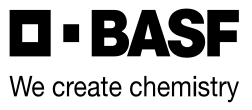Lance
Group 7
A proactive approach to disease control in a range of crops including canola, dry beans, lentils and potatoes.
- Get the best protection from diseases like Sclerotinia, Alternaria, and Ascochyta.
- Works on sprayed areas and moves systemically to protect treated areas as they expand.
Labels & SDS
7 AVAILABLE
Applicable On
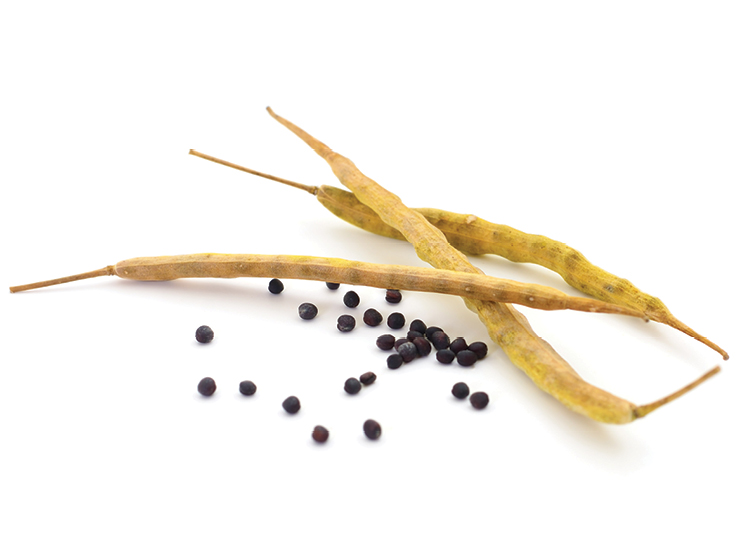
Canola
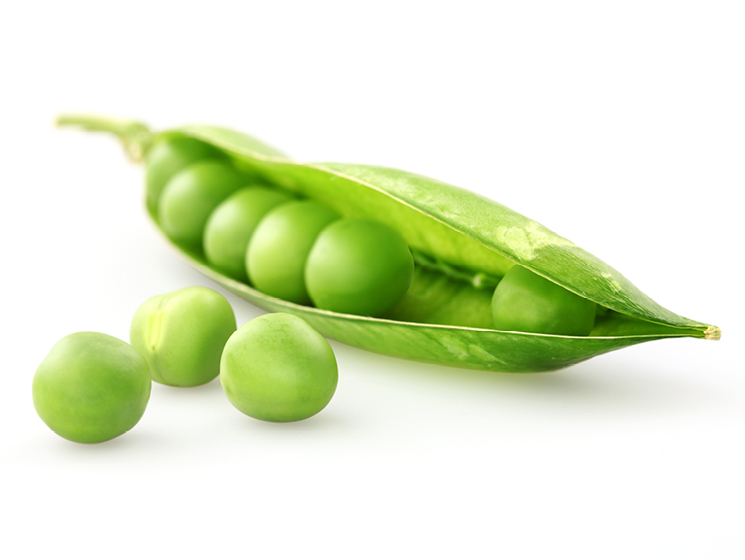
Field Peas
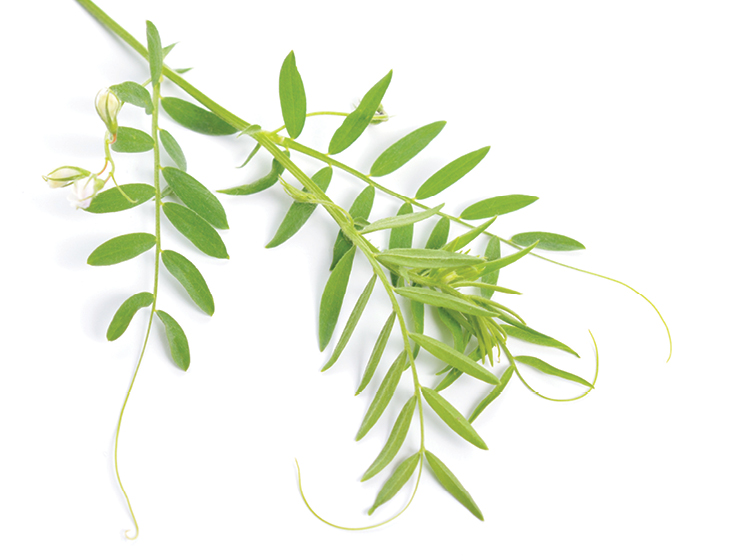
Lentils
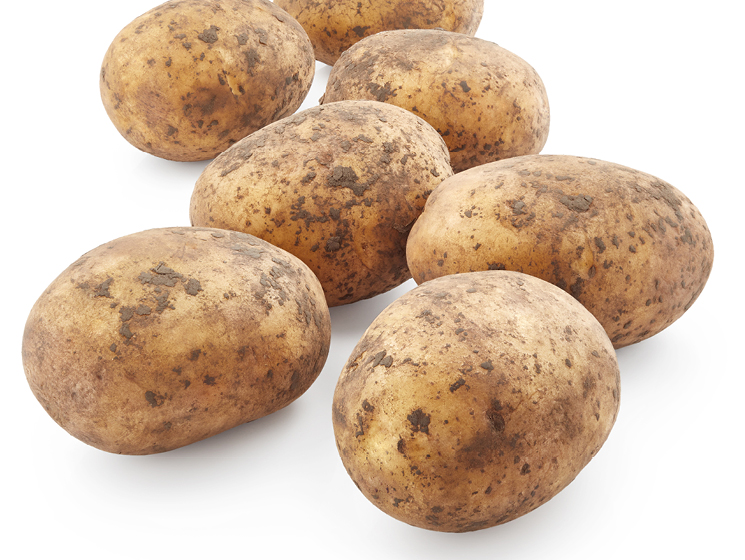
Potatoes
Labels & SDS
What to consider when deciding to spray for sclerotinia

Target yield – Understanding yield targets will help determine the potential impact of sclerotinia and help quantify the value of a sclerotinia fungicide application

Crop rotation – Seeding canola more frequently than every 1 in 3 years of a rotation or having a tight rotation with other host crops for sclerotinia (pulses) can increase risk

Commodity price – High commodity prices further benefit the return on investment (ROI) when applying fungicides

Weather – Wet conditions create the ideal environment for sclerotinia development, but morning dew and the transition from hot days to cool nights can also create high humidity in the crop canopy
Benefits of Lance
- Lance differs from most other fungicides in both its mode and site of action.
- Lance is a Group 7 fungicide which works by starving the fungi of oxygen.
- It utilizes this effective mode of action against a range of target diseases.
- Even diseases which have developed resistance to other chemical classes of fungicides can be controlled by Lance.
Performance Trials
Control of sclerotinia stem rot with Lance fungicide
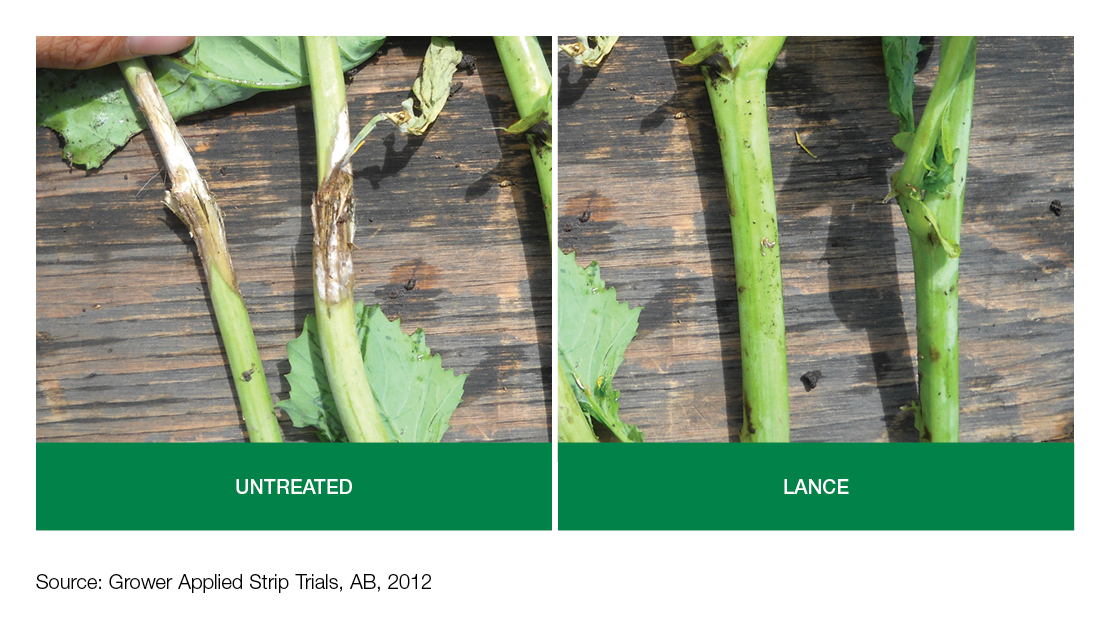
Yield protection with Lance vs. Proline® fungicide on canola
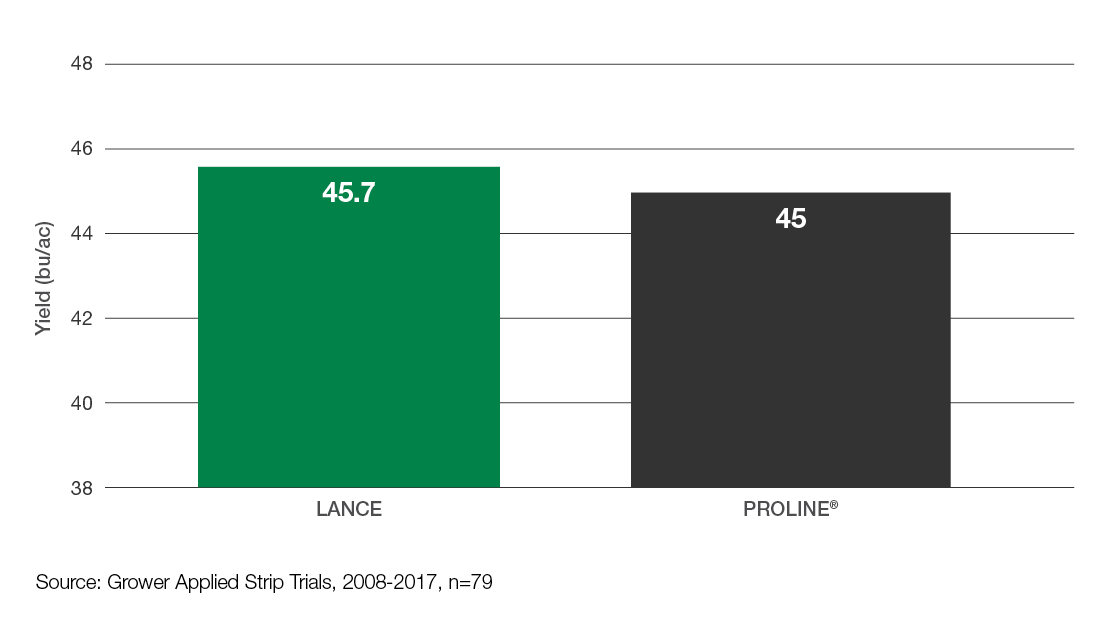
Increase yield with Lance fungicide
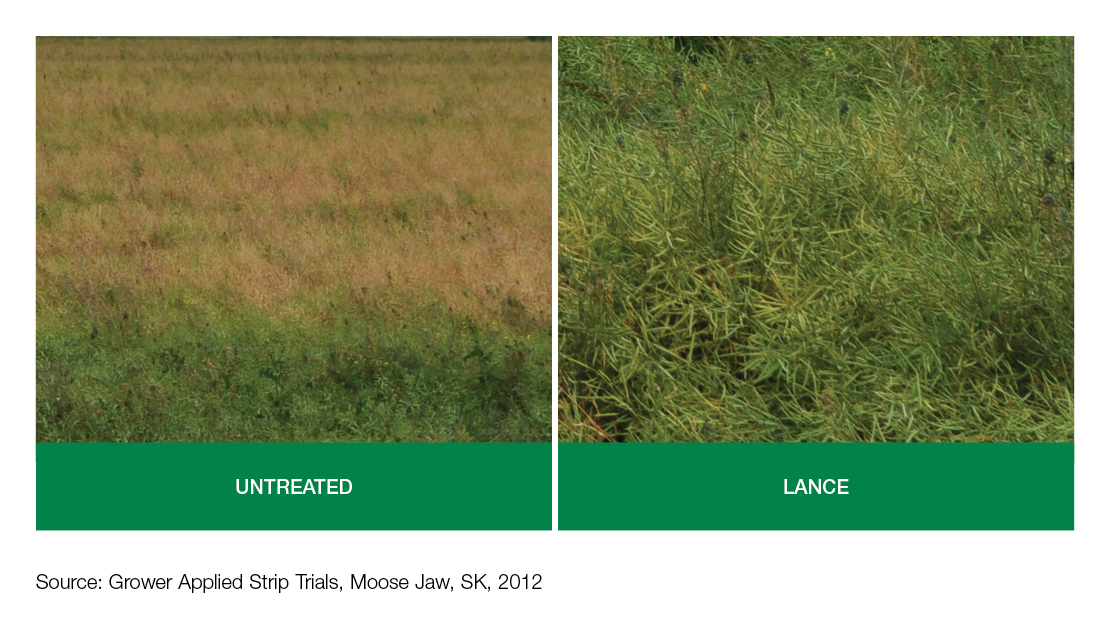
Product Info & Application Guide
Disease Management
Crops |
Diseases controlled |
|---|---|
Canola and mustard |
Alternaria black spot (Alternaria brassicae and raphani)1 |
Chickpeas and lentils |
Ascochyta blight (Ascochyta spp.) |
Dry beans2 |
White mold (Sclerotinia sclerotiorum) |
| Field peas | Ascochyta blight (Ascochyta spp.) |
Potatoes |
Early blight (Alternaria solan) |
Succulent beans |
Gray mold (Botrytis cinerea) |
| Succulent peas | Ascochyta blight (Ascochyta spp.) |
| Sunflowers | Leaf spot (Alternaria helianth)1 |
Alfalfa |
Blossom blight (Sclerotinia sclerotiorum and Botrytis cinerea) |
1 Suppression.
2 Except for soybeans.
3 Control with higher rate 227 to 312 g/ac (560 to 770 g/ha).
Application Tips
Rainfastness – 2 hours.
Lance should be applied preventatively, prior to the onset of disease.
Avoid application when heavy rain is forecast.
Apply when conditions are favourable for disease development.
Grazing
Do not graze or feed treated alfalfa to livestock.
Pre-harvest interval
7 days after application for succulent beans and succulent peas.
21 days after application for dry beans, canola, chickpeas, lentils, mustard, field peas and sunflowers.
30 days after application for potatoes.
When to Apply
| Crops | Staging |
|---|---|
| Alfalfa (for seed production) | 20 to 50% flowering |
| Canola, mustard | 20 to 50% flowering4 |
| Chickpeas, lentils | beginning of flowering |
| Dry beans2 | 20 to 50% flowering |
| Field peas | beginning of flowering |
| Potatoes | apply preventatively from tuber initiation through bulking |
| Succulent beans | 20 to 50% flowering |
| Succulent peas | beginning of flowering |
| Sunflowers | early flower |
Note: For most crops, applications can be repeated if conditions are conducive for disease development. See label for details.
4 To control sclerotinia stem rot and suppress alternaria black spot. Apply at late flowering to early green pod to control alternaria black spot.
How Much to Apply
One case of Lance fungicide will treat 18 to 40 acres, depending on crop.
Crop |
Application Rate |
|---|---|
Canola5, mustard5 |
142 g/ac (350 g/ha) |
Chickpeas6, field peas7, lentils6, alfalfa5 |
170 g/ac (420 g/ha) |
Dry beans5 |
227 to 312 g/ac (560 to 770 g/ha) |
Potatoes |
71 to 127 g/ac (175 to 315 g/ha) |
Succulent beans7, succulent peas7 |
170, 230 to 312 g/ac (420, 560 to 770 g/ha) |
Sunflowers6 |
142 to 259 g/ac (350 to 640 g/ha) |
5 Ground, aerial and pivot or sprinkler irrigation.
6 Ground and aerial application only.
7 Ground application only.
Water volume
| Ground application |
40 L/ac (10 gal/ac) |
| Aerial application | 20 L/ac (5 gal/ac |
Mixing Order
- Fill the spray tank 1/2 full of water and start agitation.
- Add the required amount of Lance fungicide to the tank.
- If tank mixing, add the required amount of the tank-mix partner.
- Continue agitation while filling the remainder of the spray tank.
- After use, clean the spray tank according to label precautions.
FAQ
What are the scouting tips to assess sclerotinia risk?
- Around mid-June through flowering, look for apothecia (golf-tee shaped mushroom structures) under the canopy. Ascospores are shot in the air from apothecia, and once in the air they move on wind currents locally and to adjacent fields. Ascospores are what infect canola plants to cause sclerotinia infections.
- Weather: cool, moist, humid periods increase risk. If when walking through your canola field late-morning or early-afternoon and the plants are still wet, risk is elevated.
- Risk also increases with these factors:
- Number of sclerotinia susceptible crops planted in past 3-4 years of rotation
- Density of canopy; healthy vigorous crops have higher risk
- Previous sclerotinia disease incidence, either in canola or other host crops
What are the symptoms to scout for when identifying sclerotinia?
Scouting for sclerotinia symptoms on plants begins at the end of flowering and continues through harvest timing. A couple of weeks after initial sclerotinia infection, watery lesions or light brown discoloration can be seen on leaves, stems and branches. These lesions expand and cause canola stems to ‘bleach’, taking on a whitish appearance, a major characteristic of sclerotinia infections in canola.
When the bleached stems are split open later in the season, sclerotia can often be found. Sclerotia are the hard, dark resting bodies of sclerotinia that overwinter in the soil.
When is the best time to apply a fungicide on my canola crop?
Nexicor® fungicide should be applied at the 2 to 6 leaf stage to protect the plant from blackleg infection and provide Plant Health Benefits1.
Lance® and Cotegra® fungicides should be applied at the 20-50% flowering stage to protect the plant from sclerotinia infection.
1Plant Health Benefits refer to products that contain the active ingredient pyraclostrobin.
Where can I find the tank cleaning recommendations?
Tank clean-out recommendations can be found on product labels.
What are the differences between Cotegra®, Lance® and Nexicor® fungicides?
Nexicor fungicide provides high-level control of blackleg in canola and contains three active ingredients, including Groups 3, 7 and 11. Nexicor builds on proven Plant Health Benefits1 to increase growth efficiency and help better manage minor stress, leading to greater yield potential2. It should be applied at the 2 to 6 leaf stage of canola.
Cotegra fungicide contains prothioconazole and boscalid, two leading active ingredients, and is the standard for sclerotinia management.
Lance fungicide contains boscalid, a Group 7 active ingredient and provides proven and consistent yield protection from sclerotinia and alternaria black spot. Both Lance and Cotegra can be applied at the 20-50% flowering stage.
1 Plant Health Benefits refer to products that contain the active ingredient pyraclostrobin.
2 All comparisons are to untreated, unless otherwise stated.
What are the recommended water volumes and application rates for canola fungicides?
- For ground applications with Cotegra, Lance or Nexicor fungicides, the minimum water volume is 10 gal/ac (100 L/ha). Higher water volumes are recommended for optimal coverage.
- For aerial applications, the recommended water volume for all BASF canola fungicides is 50 L/ha (5 gal/ac).
What are the best conditions to look for when applying Cotegra® fungicide on canola?
Ideal applications are moderate temperatures (lower than 28oC) and low wind. Avoid application when rain is forecasted within 3 hours of application.
Restrictions/conditions for Cotegra fungicide application in canola:
- DO NOT apply during periods of dead calm.
- Avoid application of this product when winds are gusty.
- For aerial application, DO NOT apply when wind speed is greater than 16 km/hour at flying height at the site of application.
- DO NOT apply with spray droplets smaller than the American Society of Agricultural Engineers (ASAE) medium classification. For ground application, boom height must be 60 cm or less above the crop or ground.
- For aerial application, to reduce drift caused by turbulent wingtip vortices, the nozzle distribution along the spray boom length MUST NOT exceed 65% of the wing- or rotor-span.
Can I still apply Cotegra fungicide on canola that is at the late flowering stage?
Cotegra fungicide is most effective when applied at the recommended 20-30% flowering stage. That said, late flowering applications can still provide value. Per label guidelines, Cotegra applications are allowed on canola from 20% flowering up until full bloom.
At which crop stage should I be spraying a fungicide on canola?
- If you're using Nexicor fungicide, you should spray between the 2-leaf and 6-leaf stage.
- For Cotegra and Lance fungicides, you should spray between 20-50% flowering.
